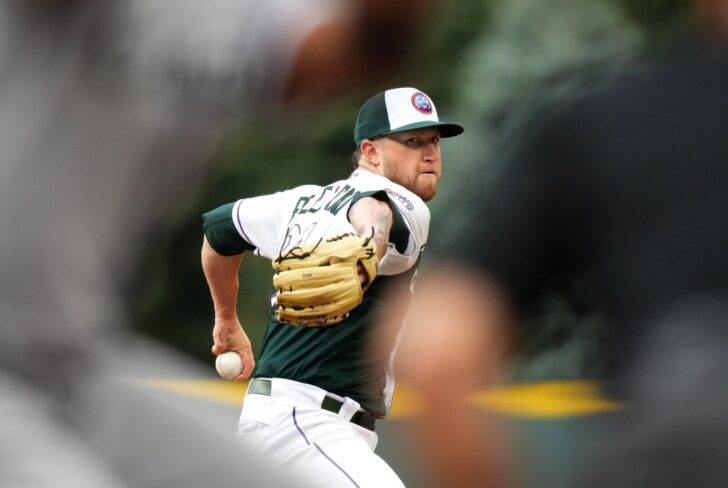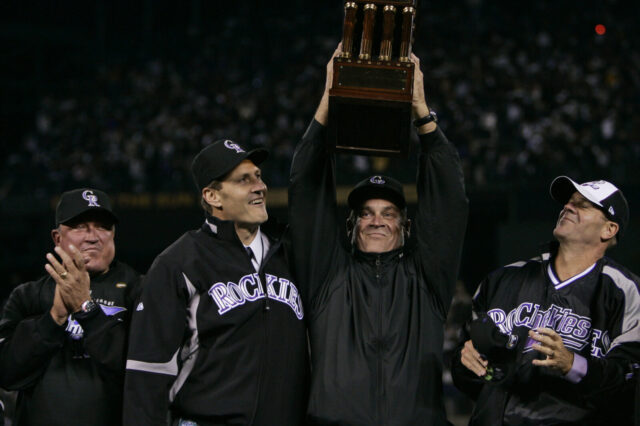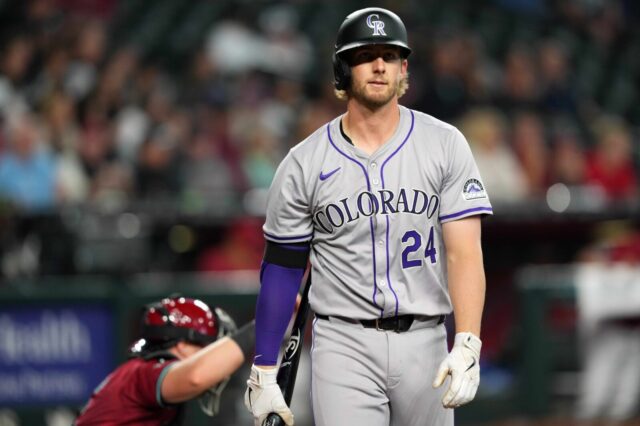While it’s probably not best to build a roster around the wisdom of tired old cliches, it’s also hard to argue that when it comes to pitching, the Colorado Rockies are beggars who can’t be choosers.
In an ideal world, they’d seek out and acquire as many strikeout artists as they can find. Avoiding contact at Coors Field is the best strategy, since a ball in play hurts you more there than anywhere else.
On the other end of the spectrum, studies have shown that the worst thing you can do as a Rockies pitcher is offer up an inordinate amount of free passes.
Of course, the guys who pile up the Ks and also avoid too many walks tend to be stars who cost quite a bit of money even before you apply the Coors Tax. And history tells us that spending big on arms is dicey business in the Mile High City.
Incredibly talented pitchers with excellent numbers elsewhere have struggled in Colorado thanks to a myriad of issues including that their best pitches may no longer move how they used to, their mentality may suffer through all the chaos and adjustments, and their body may break down thanks in part to the rigors of altitude.
Who can succeed while pitching half their games at 20th and Blake? It comes down to an almost unknowable combination of the right type of stuff, the right mindset, and enough physical endurance.
Very few have ever managed to meet all three criteria at the same time and arguably nobody has ever been able to maintain all three simultaneously over time.
When you study the resumes of the three best pitchers in franchise history, you’ll find three frustratingly different profiles.
Ubaldo Jimenez was a strikeout artist who dominated at his peak. He easily put up the best rate stats (ERA, ERA+) for a starter in franchise history but burned out fast after just four seasons. He fell victim, ultimately, to the physical grind and was also unable to re-imagine himself once his elite stuff was gone.
Jorge de la Rosa never truly managed to dominate but was somehow able to master Coors Field, winning 72.6 percent of his starts there. He was up and down over nine seasons and his overall numbers look mediocre but he managed the environment better than anyone. He had good strikeout numbers in the beginning of his tenure but was able to turn himself into a soft-contact-machine later in his career.
Aaron Cook was a classic pitch-to-contact sinkerballer who kept it on the ground often enough to last a full decade and still holds the record for the most innings pitched in the most difficult ballpark of the modern era. He was never a huge strikeout guy, and the advanced metrics never loved him (career ERA+ of 103) but his longevity is unmatched.
This scattered pattern has repeated itself more recently with German Marquez and Jon Gray finding success through swing-and-miss stuff, while Kyle Freeland and Antonio Senzatela have created weak contact and found ways to regularly win at home. (Gray was also good at home.)
At times throughout their history, the Rockies have arguably become too attached to one style or another.
Near the end of the Dan O’Dowd/Bill Geivette era, much was made about sinkerball types like Cook who could create weak contact and keep the ball on the ground… and out of the thin air.
Jeff Bridich focused primarily on home-grown talent with big strikeouts like Gray and Marquez. But he also spent big on free agents who had proven records elsewhere (Jake McGee, Wade Davis, Bryan Shaw) but failed mightily in Denver.
Current GM Bill Schmidt hasn’t been in the job long and inherited a mostly intact starting rotation that was beginning to fall apart.
Players like Jose Urena, Dinelson Lamet, and Chase Anderson were all acquired out of necessity, trying to patch holes in an injury-riddled rotation. It’s tough to say that the club “targeted” these players. Much more accurate to say they settled on them.
Two of the young players expected to take most of those innings, Noah Davis and Ryan Feltner, give us another 50/50 split with Davis being more of a soft-contact guy and Feltner having the stuff to pile up strikeouts.
The bullpen might be a different animal altogether but its also worth noting that most of the arms at the backend, Justin Lawrence, Daniel Bard, Jake Bird) also aim for whiffs.
So it is difficult at this moment in time to tell what Schmidt’s guiding philosophy on pitching is.
The offseason acquisitions of Cal Quantrill and Dakota Hudson might suggest he’s gone back to the days of seeking guys who can keep the ball on the ground.
Even when he was good – and Qauntrill was really good from 2020-2022 – he was never a big K guy but was excellent at avoiding hard contact and keeping runs off the board.
Hudson has been more up and down and may ultimately find himself in the bullpen but he too has had fantastic ground ball rates throughout his career.
Finding success this way is definitely harder to do at Coors but guys like Cook and Freeland have shown that not only can it be done, but it might also be the key to longevity.
It also makes a bit of sense when you consider Colorado’s current defensive setup. On most days, they will roll out a lineup with Gold Glove caliber defenders at three infield and two outfield spots. They even have the potential to put eight elite defenders on the field at once, which should maximize outs on balls in play.
Throughout his career, Quantrill has managed to keep his walk rate incredibly low, even last season when he struggled through injury, meaning that he will serve as the newest test for the Coors Field Conundrum.
Hudson has struggled with walks at times and so his potential to find new life in Denver is a lot lower unless he can improve dramatically in that regard.
As much as the numbers, and basic logic, show that strikeouts are king, you cannot expect to K 27 guys per game. You also cannot expect a team like the Rockies, who have a hard enough time signing free agent pitching in the first place, to shell out the kind of money it takes to get the high-strikeout artists who don’t also carry massive risks in other departments. Most especially high walk rates and a propensity to get hurt.
Once you are tied to a player for big money and/or big years, those kinds of risks can sink a team for years on end, as happened with the infamous Denny Neagle and Mike Hampton contracts.
However, when it comes to drafting and developing, the Rockies can much more afford to focus on guys who can avoid contact the most because they can find out if they can handle Coors before they come with a hefty price tag.
Their selection of Chase Dollander last summer, along with several other recent draft selections, suggests they intend to do just that. So does the most recent MLB trade deadline, wherein Schmidt acquired six young pitchers, all of whom have good swing-and-miss stuff, especially Alec Barger (11.27 K/9) and Victor Vodnik (12.39 K/9) who have been phenomenal in the minors. But, again, both also carry high walk rates.
Putting all of this together – the Quantrill and Hudson pickups, the drafts, the deadline acquisitions – it doesn’t appear as though Schmidt is ruling out any one specific type of pitcher from a player acquisition standpoint.
It does appear, though it’s an early trend to be sure, that he is targeting the whiffs in the minors while generally aiming for “veteran pitchability” at the major league level so far.
It remains to be seen whether or not the goal is to bide time for the next group of young fireballers to emerge and take over or if we should expect a similar patchwork of different archetypes to fill out the rotation for the foreseeable future. Some of that will surely depend on performance over the next year or two.
One thing is for sure. With Marquez and Senzatela spending most of 2024 recovering from Tommy John surgery, there will be plenty of time and space for some open auditions and a little more research on how to conquer Coors.



